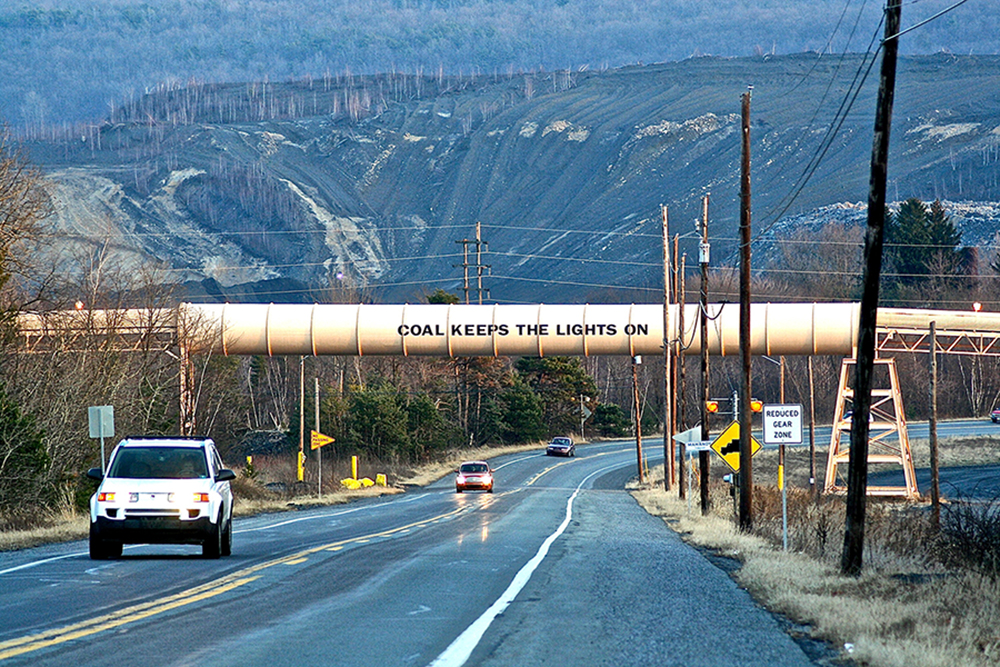Melissa Meade, a Ph.D. candidate in Media and Communication at Temple, recently penned an ethnographic article that won not one, but two awards handed out yearly by the National Communication Association (NCA). Her work, “In the Shadow of the Coal Breaker: Cultural Extraction and Participatory Communication in the Anthracite Mining Region,” took home the NCA Award for Top Journal Article in American Studies and Top Journal Article in Ethnography for 2017. According to its website, the Association “advances communication as the discipline that studies all forms, modes, media, and consequences of communication through humanistic, social scientific, and aesthetic inquiry,” and they received nominations through a competitive process reviewed by the discipline's leading scholars' for both awards that Meade's paper took home.
Meade already has a resume stacked with achievements. She did her undergrad at Albright College and got her master’s degree at the University of Pennsylvania before coming to Temple for her doctorate. This award-winning work is part of her larger dissertation project titled “In the Shadow of ‘King Coal’: Mediated Identities and Memories in the De-Industrial Anthracite Region.” This multiple-work project includes the article "In the Shadow of the Coal Breaker: Place and Landscape in the Anthracite Coal Mining Region," which won the 2015 Donald P. Kushman Memorial award, also handed out by the NCA, the highest honor for a student-authored paper chosen from over 60 divisions and thousands of entries.
Meade’s relationship with coal started at a young age. She grew up in the anthracite coal region of northeastern Pennsylvania, which for many years was a single-industry extractive economy. The land there contains the nation’s only reserves of anthracite coal, a high-grade type of coal with few impurities. Starting in the 1820s, towns sprung up in this part of Pennsylvania solely to extract anthracite coal. In some towns called "patch towns," companies owned all the infrastructure and often even paid the workers in their own currency that could only be redeemed at stores owned by the mining companies. Meade's father and paternal grandfather grew up in one such town called Mahanoy Plane. Widows of men who died in the grueling mine conditions in these towns frequently had to supply a son or another male worker to take his place, or were often forced out of company housing in the town.
Both Meade's maternal and paternal grandfathers worked in these mines, lives she describes as "precarious." There were little protections for workers and they were hardly paid a living wage. With the entire region focused on mining, they were hit hard when the area began to deindustrialize.
The region has struggled since the 1950s as cultural and social forces shaped the economy of the anthracite region including the mechanization of labor with the advent of strip mining, coal industry corruption and regional economic abandonment, as well as national energy sector changes. Meade's proximity helped with her research, but it still wasn't easy.
“There’s a lot of value in living in the community you are researching and having some key informants that can help you get to know even more,” she said. That being said, everything in ethnography takes a lot of time. I live and work in the community and grew up alongside these laborers, but also interviewed people, visited sites and drew on stories passed down by my family, who has been there for decades.”
Meade’s work delves into the transition this area went through during industrialization, with a special focus on the way people in these communities create their own media, share it and contribute to a larger narrative about the region.
Her entire project started with a brief vignette Meade wrote about a town near where she grew up, known as Centralia. Meade shared this vignette on Facebook, and it garnered hundreds of likes and shares. That inspired her to create a Facebook page titled Anthracite Coal Region of Northeastern Pennsylvania, which now has over 8,000 followers who share their photos, memories and stories with the community.
“I aimed to create dialogue and a community - there is a need to discuss these memories, heritage and political economy,” she said. “There’s a fragmentation of ideas online, which puts this history at risk of being lost.”
Centralia, a former mining town, has an underground coal mine fire that has been burning since 1962. In 1992 it was claimed by the government under eminent domain, and has since been condemned and almost entirely abandoned.
“Centralia is at risk of being forgotten or overshadowed,” Meade said. “Centralia has so many visitors who come and create their own narratives, print media, and make films that tell many different stories, but never the story of those who lived, grew up, and died there.” Meade notes that the visitors often focus on the underground fire and the subsequent eminent domain, but glaze over the personal histories of the townspeople.
“I was extremely honored [to win]. There are very esteemed scholars on the panels,” Meade said. “I’m pleased to see the area I grew up in getting attention on the national and possibly international level. That’s the most important thing for me.”
The award will be given out at the 2017 NCA Awards in Dallas, Texas, on Nov. 16. Meade plans to be there along with more than 5,000 other attendees.

